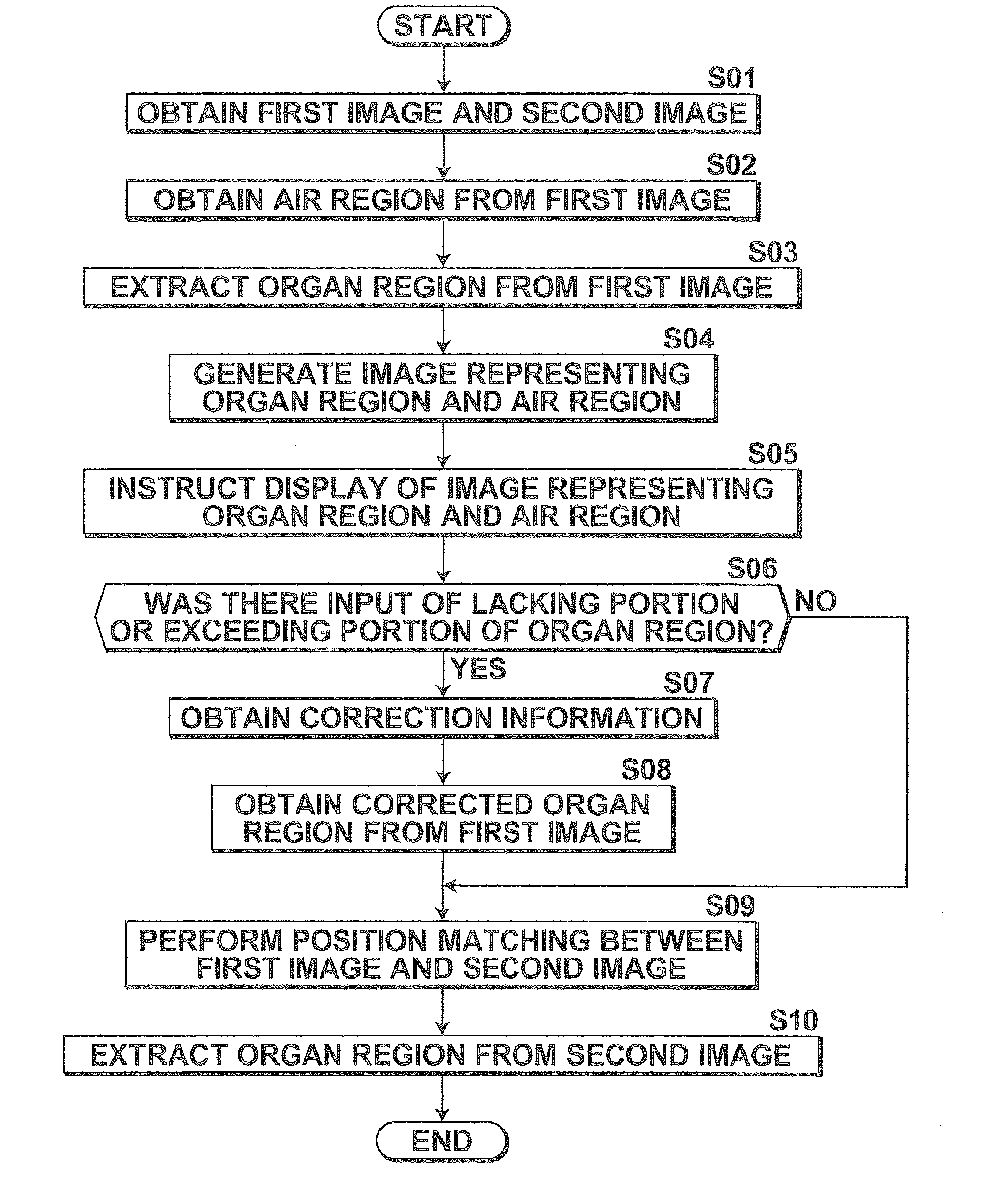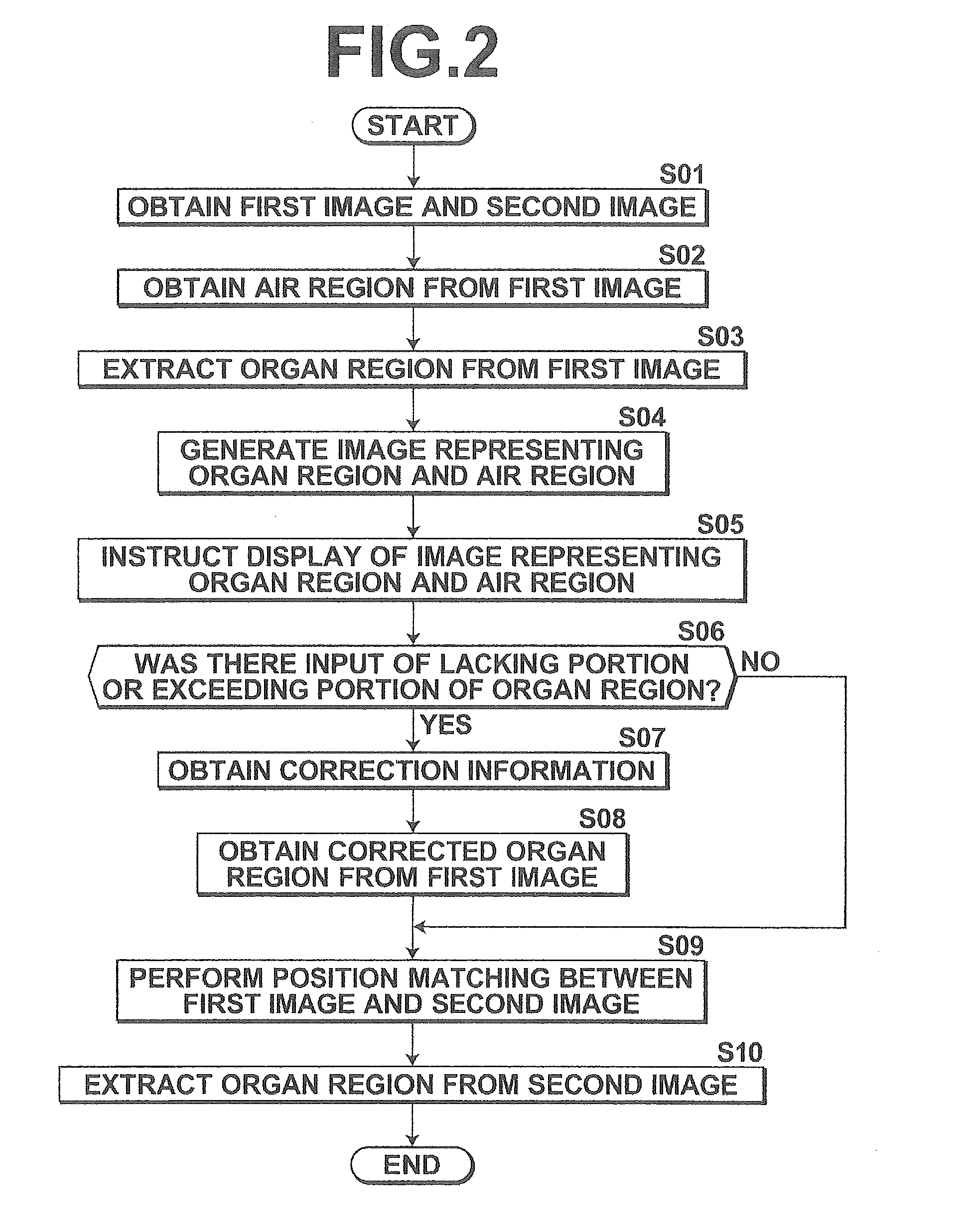Diagnosis assistance apparatus, method and program
a technology of diagnostic assistance and equipment, applied in the field of diagnostic assistance equipment, method and program, can solve the problems of erroneous extraction of a small intestine as a part of the large intestine, high risk of erroneous extraction caused by organ deformation, and high risk of all plural three-dimensional images, so as to reduce erroneous extraction, easy and accurate organ extraction, the effect of reducing the risk of erroneous extraction
- Summary
- Abstract
- Description
- Claims
- Application Information
AI Technical Summary
Benefits of technology
Problems solved by technology
Method used
Image
Examples
second embodiment
[0059]In a second embodiment, an example in which organ region Q in second image V2 located at a position corresponding to organ region P in first image V1 is extracted by using a different position matching method will be described. FIG. 5A is a diagram explaining processing for representing organ region P in first image V1 by a graph and processing for representing air regions B1 through B8 in second image V2 by a graph. FIG. 5B is a diagram explaining processing for extracting an organ region from second image V2.
[0060]In the second embodiment, only position matching processing by the position matching unit 14 in S09 illustrated in FIG. 2 and processing for extracting an organ from second image V2 in S10 illustrated in FIG. 2 differ from the first embodiment. Regarding the other processing, the function of each unit and processing are same as those of the first embodiment. Therefore, in the second embodiment, the part different from the first embodiment will be mainly described. ...
first embodiment
[0062]Next, the organ region extraction unit 12 performs the following processing, as processing corresponding to processing for extracting an organ region from second image V2 (S10) in the First, the organ region extraction unit 12 creates a first graph structure (Gpa, Gpb, Gpc in FIG. 5A) representing corrected organ region P (Pa, Pb, Pc), and which is defined by plural nodes and at least one edge connecting the nodes. Here, thinning is performed on organ regions Pa, Pb, Pc, and a segment corresponding to a core line of the organ region is extracted. Further, ends of the segment are defined as nodes, and a node dividing the segment with predetermined intervals is defined. Further, the divided segments are defined as plural edges. Accordingly, first graph structures Gpa, Gpb, Gpc representing segments are generated.
[0063]Further, the organ region extraction unit 12 obtains plural air regions (B1 through B8 in FIG. 5A) included in second image V2, and creates plural second graph st...
PUM
 Login to View More
Login to View More Abstract
Description
Claims
Application Information
 Login to View More
Login to View More - R&D
- Intellectual Property
- Life Sciences
- Materials
- Tech Scout
- Unparalleled Data Quality
- Higher Quality Content
- 60% Fewer Hallucinations
Browse by: Latest US Patents, China's latest patents, Technical Efficacy Thesaurus, Application Domain, Technology Topic, Popular Technical Reports.
© 2025 PatSnap. All rights reserved.Legal|Privacy policy|Modern Slavery Act Transparency Statement|Sitemap|About US| Contact US: help@patsnap.com



